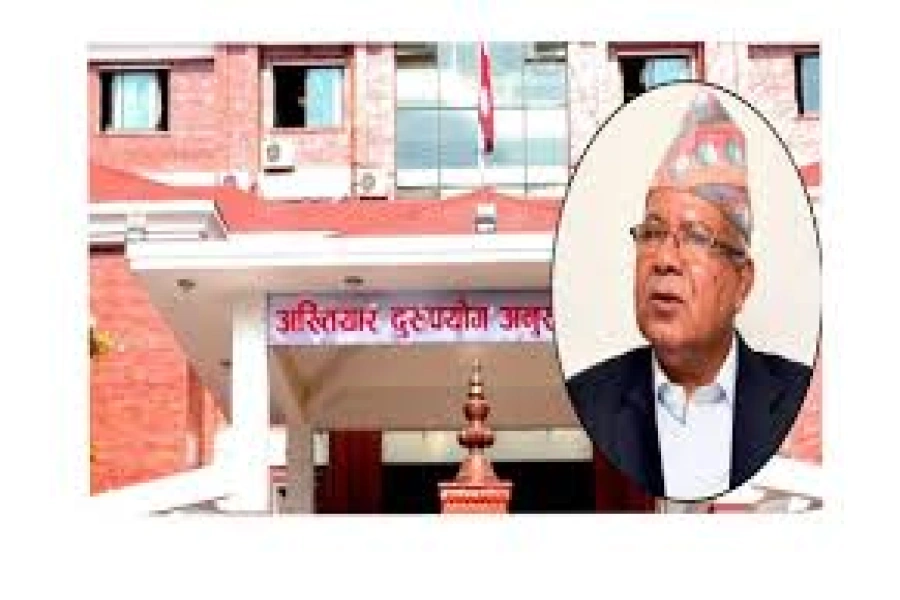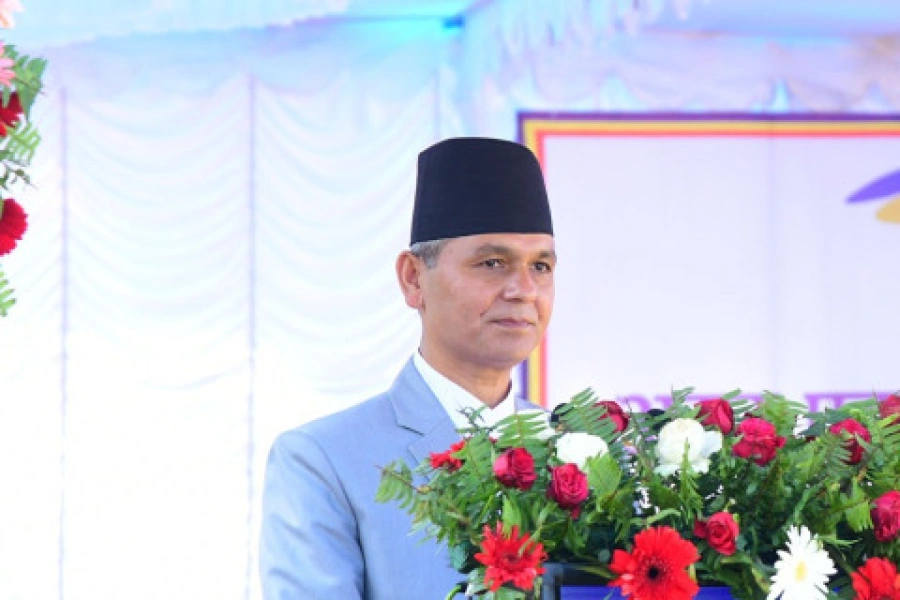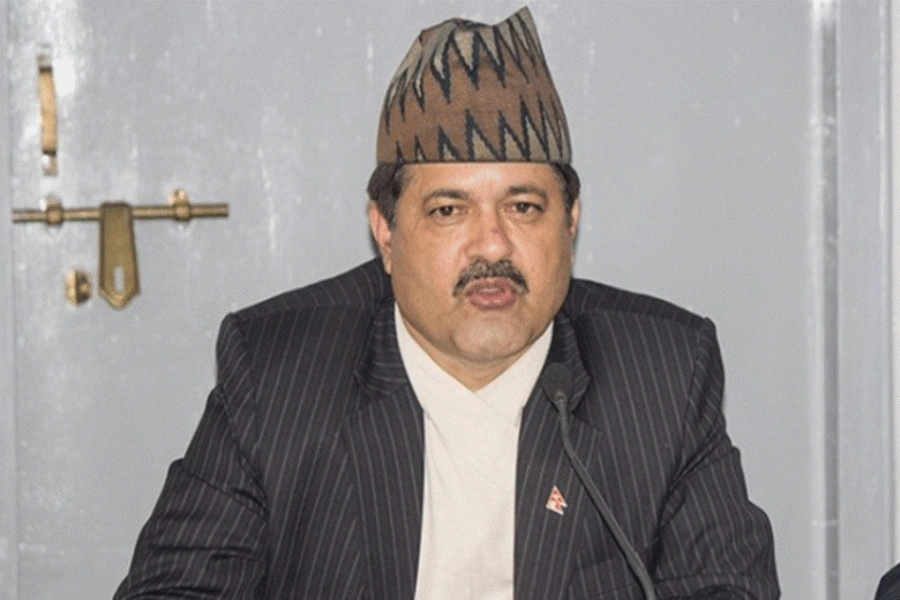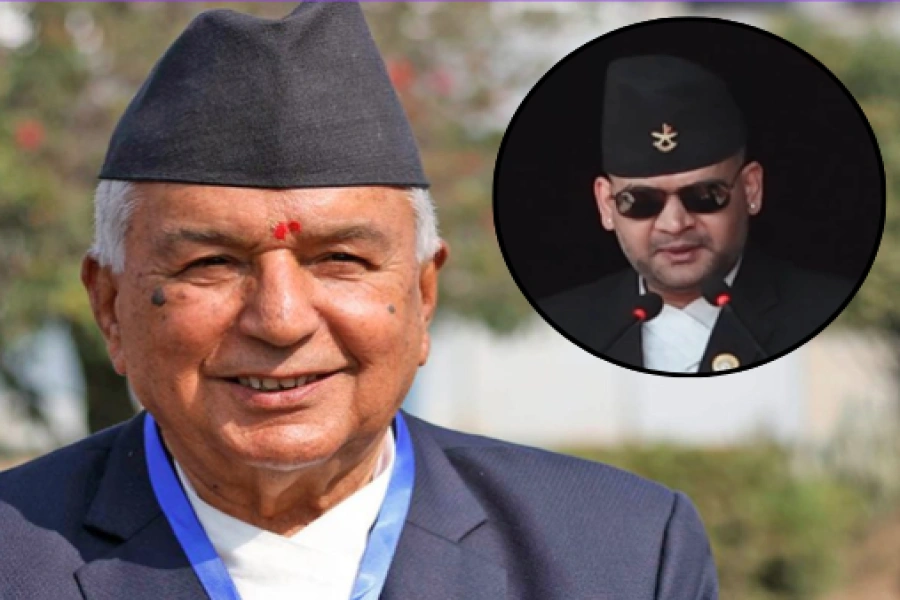Prakash Ranjit first started drawing when he was just four years old. Now, 23 years later, he draws with even more passion and, of course, his art is much more refined than ever before. Ranjit was introduced to the world of arts quite early in life as his great uncle, KG Ranjit, was an artist. His aunt, Ashmina Ranjit, also loved drawing so from an early age the two took turns to mentor him.
“My great uncle and my aunt are my inspirations. They helped me appreciate art on a much deeper level which made me value not only the final product but the effort and creativity that go into it as well,” he says.
Ranjit started out by tagging along with his mother to see his aunt’s shows whenever she did performance and installation art. “I often copied her works but mostly just observed what was going on around me,” he explains. After finishing his 10th grade, his aunt enrolled him into classes at the Srijana College of Fine Arts, an experience he really enjoyed. By this time, Ranjit was already devoted to painting and drawing but he still joined United College in Kumaripati, Lalitpur, to study science. This, he says, was to please his parents.
However, since Ranjit’s interest lay elsewhere, it was inevitable that he would lose the motivation to study science. “Initially, I did okay. But after a while, I spent all my time daydreaming and sketching, and thus felt completely out of place,” he explains. After some time, his aunt helped him persuade his parents to let him attend Srijana College of Fine Arts once again.
‘Art Evolves: Nepali Modern Art’: Review
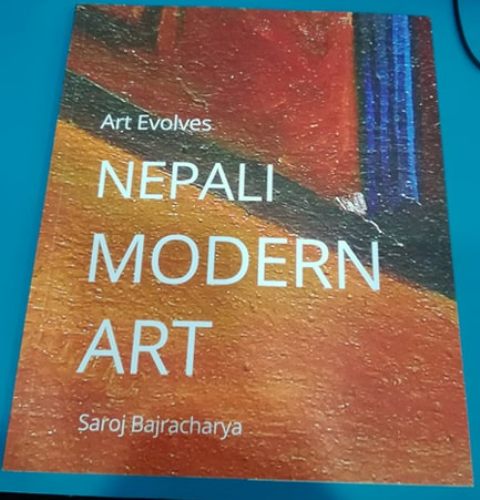
“At first, they were very skeptical and even begged me to go back but eventually they warmed up to the idea,” says Ranjit adding that now his parents are the ones who come up with ideas that he can work on whenever he is having an “artist’s block” moment of sorts.
After completing his studies at the Srijana College of Fine Arts, Ranjit got enrolled in Kathmandu University’s art and design program. “KU’s art scene was so inviting. We were mentored by various artists and even collaborated with some,” he explains. This is also where he took up illustrations which mainly focuses on a following a linear storyline, like in graphic novels or comic books. Ranjit was also a comic-devotee, enjoying his fair share of comic books by artists like Alan Moore and Frank Miller. His favorite comics include the League of Extraordinary Gentlemen, The Dark Knight, V for Vendetta, to name a few. “All these stories had a vision. They all had something to say. I was impressed by their assertiveness,” he says.
After finishing college, Ranjit realized he had to work and so when he was approached to help illustrate a children’s book, he was more than happy to do it. Ranjit explains that is how his art started evolving from paintings to darker lined drawings. He realized he enjoyed illustrating more than painting or just drawing. In 2017, he also published his own graphic novel along with his friend, Rishi Amatya. Titled “Lumankati” that means “don’t forget” in Newari, the graphic novel is in English and is a historical fantasy that revolves around Nepal’s first recorded earthquake and the death the then Malla king.
Ranjit explains his type of drawings falls under “ligne claire” – a style of drawing pioneered by Herge (The Adventures of Tintin) and found in the works of cartoonists like Jean Giraud and Maurice De Bevere (known as Morris). He further explains he was fascinated by how the drawings in comics like these made use of lines – using darker lines for main characters and lighter ones for the surrounding – to create a magnificent contrast.
Though Ranjit loves the work he does, he mentions working on Lumankati was difficult. During this time, he was also involved in several arts projects and was working 24/7. The pressure to meet deadlines as well as meeting people’s expectations took a toll on Ranjit’s mental health and he developed anxiety and was also diagnosed with borderline personality disorder.
Ranjit, being very vocal about his struggles, didn’t shy away from getting help. His therapist then recommended channeling his emotions through writing and conversing but Ranjit found that he was calmer and more focused when he was drawing rather than writing or talking. “I’m not too expressive while writing but drawing is almost meditative to me,” he says.
Then Ranjit came across the idea of drawing one sketch a day. As of now, he has completed 291 days with only 74 days remaining before he completes the challenge. His wonderful drawings from each day are religiously uploaded on his Instagram page. “I follow a schedule, separating three to four hours everyday just to draw,” he says. For the drawings, he is inspired by everything that goes around him. For instance, the odd-even vehicle fiasco or simple occurrences like people drinking tea, a woman bringing in garbage for the garbage collector, or an old man lost in his thoughts.
Also, when Ranjit was ten years old he moved to Basantapur which explains his current fascination with temples and deities. “As a child, I would take my sketchbook and sit under a temple and draw people’s faces,” he explains. He likes to draw pictures of deities like Ganesh, Hanuman, Shiva and Bhairav, mainly because of the eccentricity in their personalities.
After finishing all the 365 drawings for the “one sketch a day” challenge he has set for himself, Ranjit plans to exhibit them. “It would be a great experience if people could see my work in real life and not through a digital source and give me their feedback. That’s the only way I could ever hope to learn and grow,” he concludes.




-1765804380.webp)
